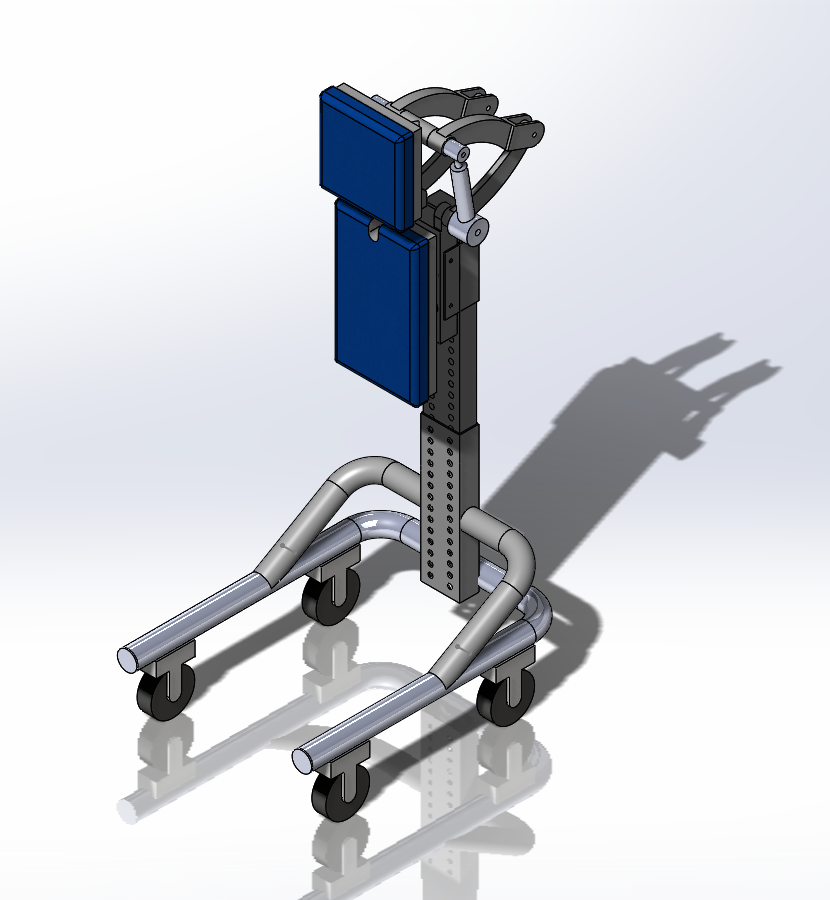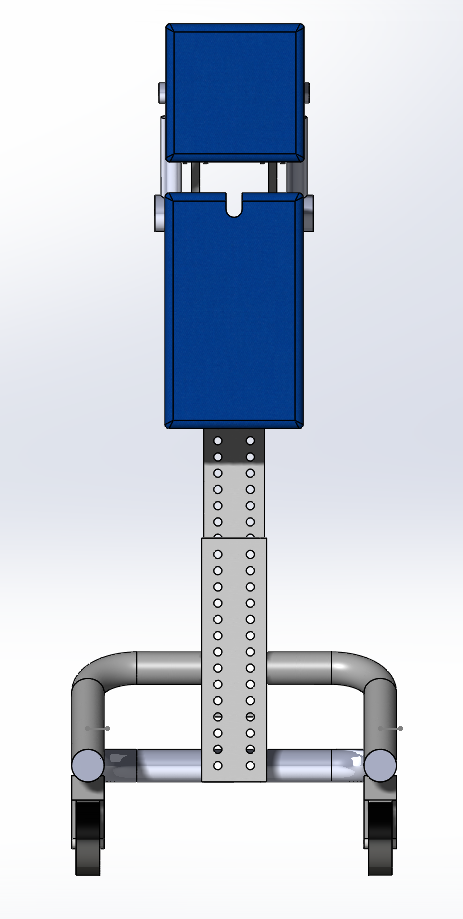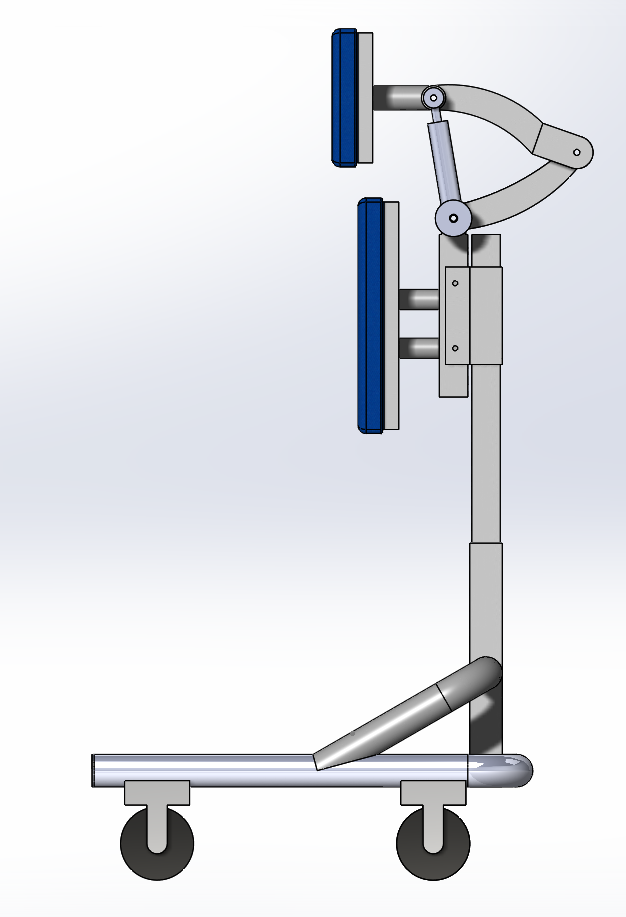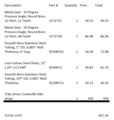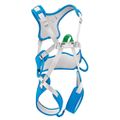Modified Walker
Abstract
Madelyn is a girl who has Pitt Hopkins Syndrome and she needs a modified walker that will allow her walk with good mobility while providing stability and support. Pitt Hopkins disrupts communication between the brain and muscles which severely delays her motor skills. Most children are walking by the age of two and a half, but she isn’t currently able to hold herself up or stand by herself. The purpose of our project is to make a walker that is able to support her and help keep her in an upright position so she can learn to walk independently.
Team members
- Chris Edwards
- Alex Gault
- Nick Dunavan
- Chris Blair
- Jacob Wilberscheid
Problem Statement/overview of the need
Madelyn needs a walker that gives her the mobility needed to walk inside and through doorways while supporting her and promoting good posture. She currently has a couple different walkers, but they either don't support her well or are too bulky for her to move. These walkers also take up the majority of the space in front of Madelyn, preventing her from interacting with her environment. Her parents would prefer for the walker to be more adjustable than what they currently have so Madelyn is able to use it longer. Her current walker is preventing her from using correct posture for walking due to the fact that it is too small for her.
Design Specifications
1. Needs hip, lower back, thoracic, and head support
2. Must fit through the average door frame 32" max
3. Must have rubber wheels that allow easy movement on hard flooring
4. Needs to be very light for Madelyn to move
5. Needs to promote proper walking posture
6. Needs to be adjustable and comfortable
7. her parents would like the space in front of Madelyn to be free so she can interact with her environment
8. Needs to support a minimum of 30 lbs
9. Her parents would like the front wheels to be positioned in a way that would allow Madelyn to walk up to tables
10. Must support a child at least 35" tall
11. Adjustable hip support must come a minimum of 12.5" off of the ground
Background research
Conceptual Design
For these designs we are experimenting with different strap and harnesses along with different leg and wheel designs.
Design Concept 1
For this design we are taking a lot of structural aspects from Madelyn's squiggles stander. She is supported well in this stander and her parents really like the rubber casters that come with it. We have one main strap that covers the majority of her midsection as well as a thin seat that rest between her legs. There are many adjustments that will help this design be comfortable.
Design Concept 2
This design relies more on straps to support Madelyn. The greater surface area contact around her hips should be more comfortable than a thin seat. These straps can also be adjustable to account for her growing. The leg and wheel design leave plenty of open space around her legs. This design also offers horizontal bumper casters above the wheels to prevent damage from bumping into things.
Design Concept 3
This design offers similar support as design 1, but there are modifications regarding the wheels. We wanted to experiment with larger wheels to see how they would affect ability and mobility. This design also offers adjustments so Madelyn can use it as she grows.
Evaluate concepts/select candidate
With these considerations we decided that design two would be primary design.
Detailed Design
Description of selected design
After our design presentation, we met with Madelyn and her family to discuss these designs and see which one we would further develop. The family liked the idea of a harness to support Madelyn. This support system looked to be more comfortable for Madelyn. They also liked how the back support was adjustable. This would give Madelyn more room for her legs as she grew. We decided that it would be a good idea to use extruded aluminum as the back support so the backrest can be easily adjusted. We also thought it would be easier for Madelyn's mom if the harness was able to detach from the backrest. This way Madelyn's mom wouldn't have to pick Madelyn up to put her in the harness. We also thought that the headrest shouldn't be fully rigid so we added an air strut design that should allow some give when pushed. These changes to our second design are reflected in our new design.
Detailed description of selected design
- For the frame we decided to use 1/8" thick, 2" outer diameter circular aluminum tubing
- For the back support we decided to use 2x3" extruded aluminium
- For the collar we decided on 1/4" thick aluminum tubing that will fit around the extruded aluminum back support
Analysis
The first analysis was a static loading test that showed the stress distribution in the lower frame of the walker. This will give us an idea of how the frame will handle load and where potential stress points are in the design. The second analysis was the center of mass of the walker. This is important because it will determine how stable the walker is. With the center of mass we will be able to have a better idea of where potential tipping points might occur. The third analysis was a mobility analysis on the headrest. This will give us information on how the headrest will react when moved.
Engineering analysis 1
A static loading analysis was preformed on the bottom frame in solid works to test the stress distribution under load. The frame was modeled as 4130 steel alloy. The round tubing had a 1 in outer diameter and was 0.049 in thick. The square tubing was 2.5in x 2.5in and had a thickness of 6/16 in. The weight of the frame was 10.14 lbs.
Using a load of 80 lbs, the max Von Mises Stress was 4.044e+07 N/m^2. This is 4.195e+08 N/m^2 lower than the yield strength of the 4130 steel alloy. This loading resulted in a safety factor of 11.37
The 80 lbs load resulted in a max displacement of 0.195 mm. The displacement scale is 396.028 times larger than the true displacement in order to show the displacement more clearly.
Engineering analysis 2
Engineering analysis 3
CAD Drawings
Bill of Materials
Final price is $990.00
Assembly Instructions
Fabrication Process
Insert pictures of fabrication process
Testing and implementation
Describe testing, delivery, how used/received by the family
Photos of Completed design
Insert pictures of the final product
Instructions for safe use
Provide a clear summary of safe use for the family. Do not use the device unless supervised by an adult that has been fully understood the safe use of this product.


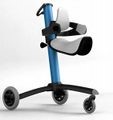

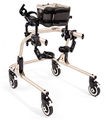

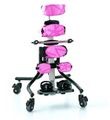

.png/87px-Scan_20190929_(2).png)
.png/87px-Scan_20190929_(3).png)







